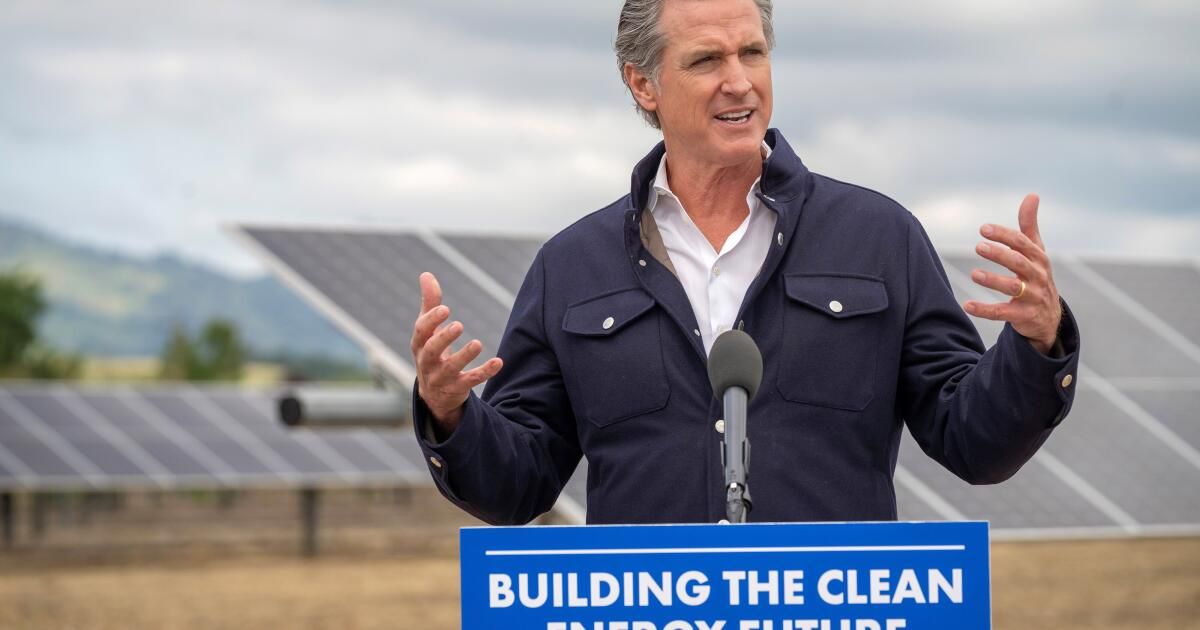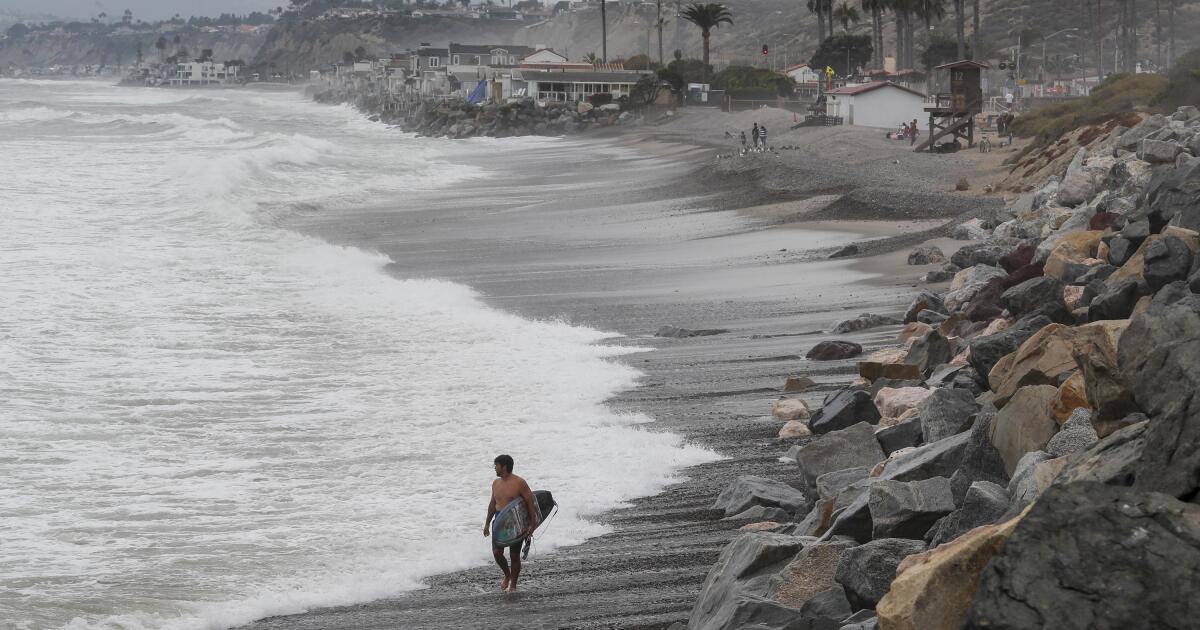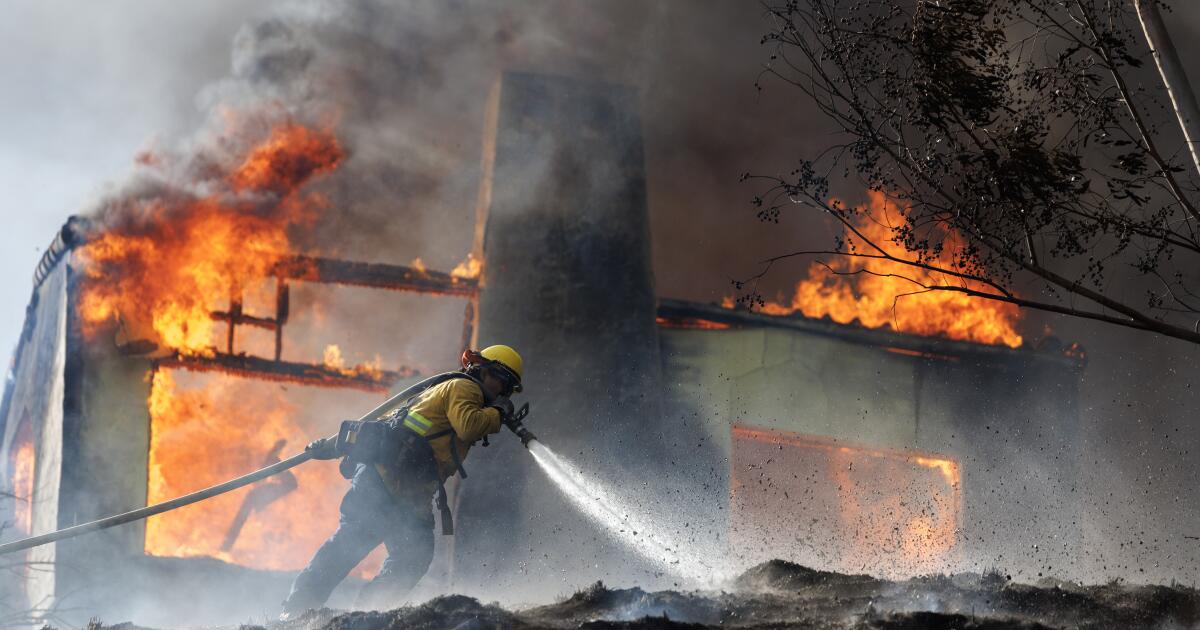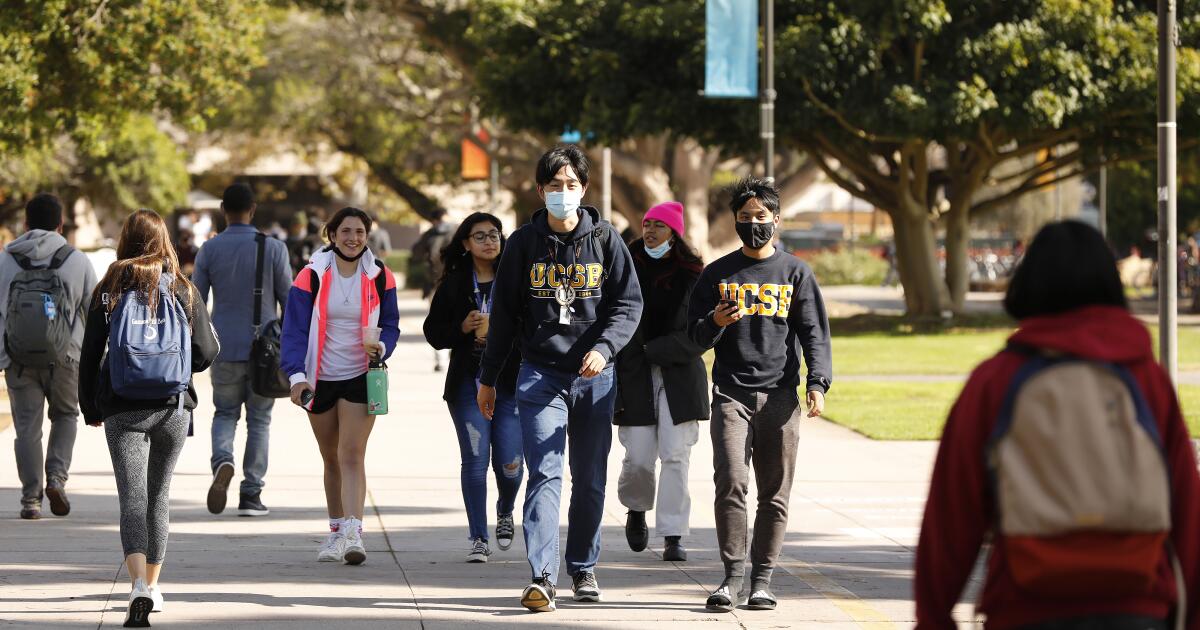Over the past decade, a flagship California program that charges polluters for their planet-warming emissions has generated billions of dollars for state initiatives, and Gov. Gavin Newsom said Wednesday that these revenues are effectively helping to reduce pollution. pollution and combat climate change.
“This is the backbone of our climate financing in this state,” Newsom said during a call with reporters. “It is a source of deep pride that we continue to be a model for the rest of the nation and, indeed, for the entire world.”
Speaking days before a planned trip to the Vatican, where he is scheduled to attend a climate change conference hosted by Pope Francis, Newsom touted the successes of the cap-and-trade program since 2014. submitted a report detailing $11 billion in implemented projects, as well as $17 billion in scheduled funding for additional projects.
The funds generated by the auction of pollution rights have been allocated to projects such as the one in California high-speed trainlow-carbon public transport, rebates for those who buy electric vehicles, efforts to capture methane emitted by dairy cows, land conservation and tree planting, and building affordable housing.
Aggressive and impactful reporting on climate change, the environment, health and science.
But the program, which was one of the first of its kind, has also received criticism.
Environmental Justice Advocates have discussed that it is not adequately protecting people who live near large sources of pollution, such as oil refineries. Experts have said current emissions reductions are not on pace to meet the state's climate goals and that the way state officials track the benefits of spending overstates the actual effects on emissions reductions.
The State Auditor found in 2020 that California air quality regulators have not done enough to measure reductions in greenhouse gas emissions achieved through incentive programs.
But Newsom said the projects funded to date are “evidence” that the program is delivering the benefits it was designed to provide and helping the state meet its greenhouse gas reduction goals.
Newsom recalled attending the 2006 ceremony where then-Gov. Arnold Schwarzenegger signed the original legislation in law. He also praised former Gov. Jerry Brown, who in 2017 signed a bill who extended the program, for continuing to “fight the good fight against all the opposition, all the detractors who said it couldn't be done.”
“Governor. Schwarzenegger was right. The cap-and-trade advocates were right. The naysayers and cynics were wrong,” Newsom said.
State officials said more than 578,000 projects funded through the California Climate Investments program have supported thousands of jobs, while reducing emissions and protecting public health. They said 76% of the funds have been spent in low-income communities, where people often face greater pollution.
“For more than a decade, California has been a global leader in climate action,” said Lauren Sánchez, the governor's senior climate advisor. “We are committed to the strongest, most comprehensive climate action in the state's history, raising the bar not only for ourselves but for governments around the world.”
According to the state report, the program has helped build affordable housing in employment centers, with more than 12,000 units under contract.
The program has also supported projects aimed at reducing the risk of forest fires by thinning vegetation and restoring degraded forests.
Additionally, Californians have received credits on utility bills funded by the cap-and-trade program.
The market-based program sets a decreasing limit on the amount of greenhouse gas emissions allowed annually. The California Air Resources Board issues allocations each year, providing some for free and auctioning others, generating revenue for the Greenhouse Gas Reduction Fund.
As fossil fuel companies and other polluters buy up emissions rights, the auctions have raised between $3 billion and $4.3 billion a year.
Newsom said these investments show “what's possible when polluters are forced to pay.” He said billions of dollars in additional investments “will continue to build the climate projects we need, faster.”
In 2023, the program provided $1.7 billion for thousands of new projects, including investments in low-carbon transportation, land conservation, dairy methane reduction, and affordable housing projects.
“Projects funded to date are expected to reduce 109 million metric tons of greenhouse gas emissions, the equivalent of removing 25 million cars from California roads in one year,” said Board Chair Liane Randolph. of California Air Resources. “That figure represents 80% of the gasoline cars on the road today.”
However, experts have said there are significant weaknesses in the state's current methods for tracking the climate benefits of spending.
“I think these numbers are probably a little more optimistic than they should be,” said Danny Cullenward, a climate economist at the University of Pennsylvania's Kleinman Center for Energy Policy. “I think the benefits that are claimed are significantly greater than what good analytical studies have found.”
He said part of the problem is that the data on projected benefits is largely self-reported and “pretty soft.”
For example, the way the state tracks the climate benefits of electric vehicle rebates assumes that each rebate awarded causes a consumer to purchase an electric vehicle, he said, although some likely would have purchased the vehicle without the rebate.
Profitability can also be skewed in the data, he said, when the cap-and-trade program funds only part of a project but claims all the benefits of carbon reduction.
“A lot of good things have been funded. But one of the challenges is that so far the reporting, the quality of the data, on what has been funded and the effect it has had on reducing emissions is quite varied,” Cullenward said. “I think it's unquestionably good that we have the program and I think there's substantial room to improve the effectiveness with which we're spending the money.”
This is especially important given the state's tight budget situation this year, he said, and the fact that experts have projected that California, despite recent improvements, will still it's not going in the right direction to achieve its goal of reducing greenhouse gas emissions to 40% below 1990 levels by 2030.
Another topic that has generated criticism is the fact that about 65% of annual cap-and-trade revenue must be dedicated each year to various programs, of which 25% will go to high-speed rail and the rest will be divided between affordable housing, low-carbon public transport and rail transport. operations and drinking water.
When state Senate committees held an oversight hearing in February, legislative staff prepared a document describing the status of the cap-and-trade program and noted that both the State Auditor and the independent Legislative Analyst's Office have expressed concerns about “limitations in estimates” of the cost-benefit data.
News coverage has also revealed problems. in a 2019 researchProPublica detailed concerns among experts that while the program had helped the state meet some initial benchmarks, it had largely allowed big polluters to “do business as usual and even increase their emissions,” while There have also been concessions to the oil and gas industry. .
The Air Resources Board has been discussing possible reforms that would address some of those concerns.
So far, the program has not been particularly effective in reducing emissions, Cullenward said.
“By design, it was too generous. “It gave too many permits to pollute, relative to our climate goals,” he said.
He hopes the reforms the Air Resources Board is considering will make the program more effective, and said it's important for state officials to “get really serious about the programs they spend their money on that are most cost-effective in reducing the emissions”.
“Right now, it's kind of a pitched battle,” he said. “It's a lot of money and we have to use it well.”












